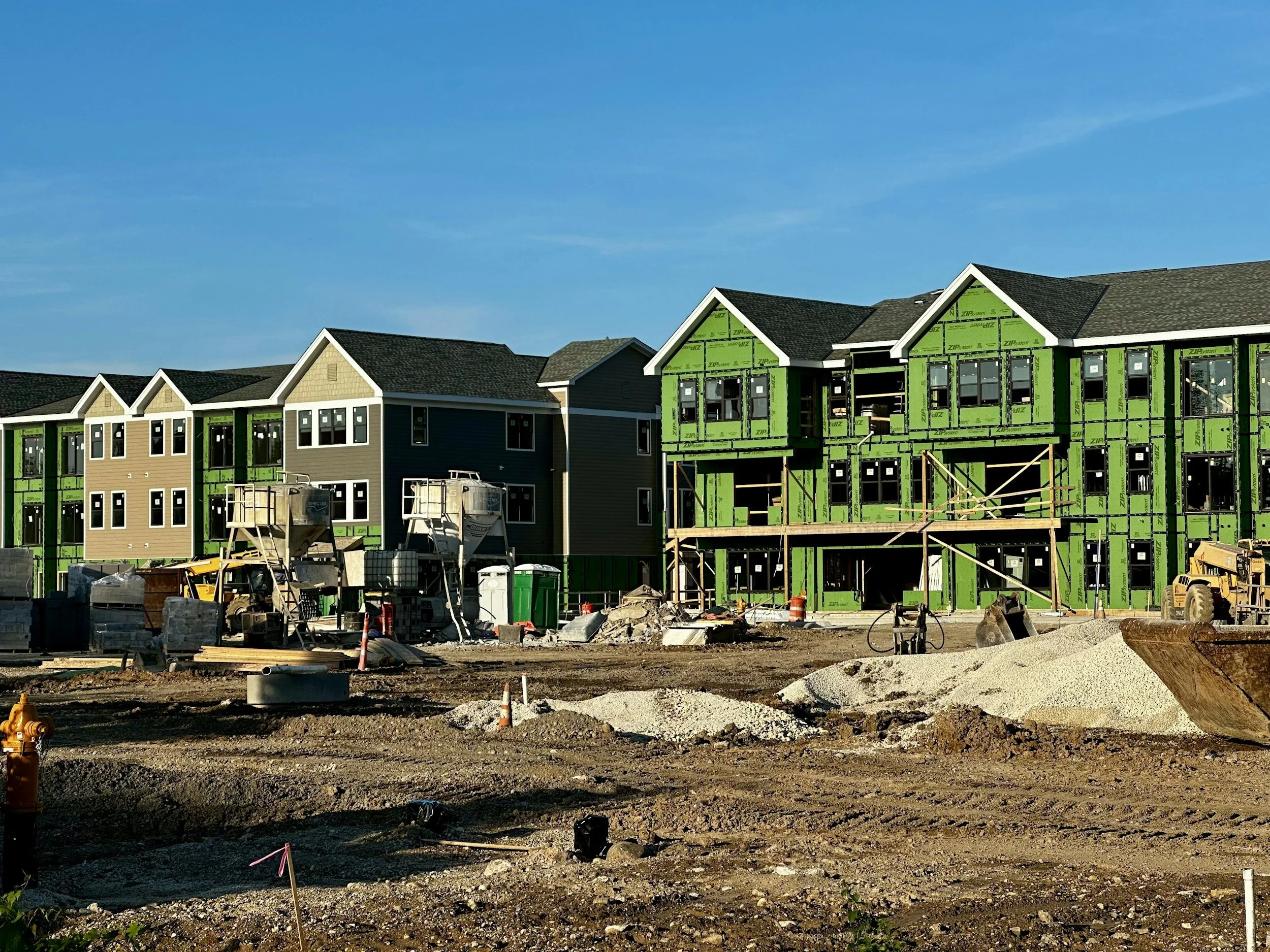Supply Side Economics
As we wind down from a challenging year in multifamily investment, we wanted to share our insights and evolving outlook on supply and demand dynamics—especially as they affect the Southeast U.S. markets where we are actively positioned. While national trends form the backdrop for our strategy, the regional story in the Sun Belt, and particularly the Southeast, merits special attention.
At the national level, demand for rental housing continues to receive support from the home-ownership market. A recent report by the National Association of Realtors revealed that the share of first-time homebuyers has fallen to a historic low of just 21 percent, and the median age of those purchasing a home has risen to 40 (NAR). That is an astounding data point, highlighting the affordability crisis and current financial health of young Americans today. Many households that might otherwise transition into homeownership are either delaying or foregoing that path altogether. Elevated mortgage rates, higher down payments, and elevated home-price entry barriers are keeping more households in the rental sector for the foreseeable future. That structural tailwind for multifamily demand should not be underestimated.
At the same time, notable supply-side pressures are making themselves felt. On a national basis, we are seeing record levels of apartment completions and a pipeline backlog that is only now beginning to moderate. According to research from Yardi Matrix, while absorption remains resilient, rent growth is muted; their outlook for 2025 -2026 projects rent growth of only about 1-1.5 percent, before accelerating modestly in 2027 and 2028 (Yardi). Similarly, a study by Cushman & Wakefield notes that the U.S. has experienced three consecutive quarters of new deliveries in excess of 100,000 units, while rent growth in the South region (which includes much of the Southeast) has been especially weak—just 0.6 percent year-over-year in Q3 (Cushman & Wakefield). And the Census Bureau data show that the percentage of new apartments absorbed within three months of completion has dropped significantly, with the South region reporting about 12 percent of delivered units still unleased after a year (Eye On Housing).
One article from GlobeSt frames it quite succinctly: “Multifamily absorption defies forecasts: how 725,000 units unexpectedly found renters” (Globest). That headline captures the somewhat paradoxical condition we face—strong renter demand but concurrently, in many markets, elevated vacancy and slower rent growth because supply has surged. In many Sun Belt markets, and certainly in portions of the Southeast, sizeable apartment deliveries over the past 18-24 months have generated leasing headwinds, especially in higher-price or Class A product, where concessions and lease-up delays have become the norm.
From our vantage point as active investors in the Southeast, the interplay of these forces suggests a two-phase narrative. In the near term, elevated deliveries continue to dampen rent growth and elevate vacancy. The “landlord’s market” that many of us are waiting for has not fully materialized in several of our submarkets because we are in the middle of the supply wave. For example, within our Southeast focus regions, we are seeing stabilized vacancies inch up and leasing spreads widen relative to less-impacted markets. Operators are understandably prioritizing occupancy over rent escalation, leading to renewals that outperform new-lease growth and some markets where rents are actually lower than a year ago.
But—and this is critical for our strategy thinking—the supply wave is about to shift. According to CBRE’s outlook, by the end of 2025 the average U.S. multifamily vacancy rate is expected to finish around 4.9 percent and annual rent growth around 2.6 percent, but importantly the report flags that many of the markets that experienced heavy supply growth are past the peak of deliveries and that completions will slow considerably (CBRE ). Developers, weighed down by higher construction costs, rising interest rates, and more stringent underwriting, are slowing starts and new projects. This suggests that beginning in 2026 and into 2027 we should see a tightening of the supply pipeline. As new supply slows, and given the structural tailwind of households staying renters longer, occupancy should firm up and rent growth should re-accelerate.
In the Southeast, this transitional dynamic offers a compelling window. As we move into 2026/2027, we anticipate that the heavy lift of leasing-up the recent surplus of units will be behind us, and new supply will be significantly lower, resulting in fundamentals shifting toward occupancy gains and rent growth. For investors and operators like us, that means we are poised to move from an environment of muted rent growth and higher vacancy into one where pricing power returns.
Our strategic implications in the Southeast are twofold. First, in the short term we continue to emphasize disciplined underwriting: we maintain conservative rent-growth assumptions, monitor lease-up and concessions closely, and focus on operations that protect occupancy and cash flows during this supply-heavy phase. Second, we are positioning for the inflection ahead: as starts slow, we are targeting value-creation plays that are ready to benefit from improving fundamentals in 2026/2027—whether through renewal strategies, amenity repositioning, or acquisition of assets with upside once supply tailwinds shift.
In closing, we believe we are navigating a meaningful turning point. The convergence of high home-ownership barriers (keeping renter demand elevated) and a decelerating new-supply pipeline sets the stage for a favorable landlord climate emerging in the Southeast in the next 12–24 months. While we are mindful of the near-term supply drag on rents and vacancy, our capital and operating plans are designed to capture the eventual upside.
Thank you for your continued trust and partnership. As always, we are committed to keeping you informed of meaningful shifts in the market and our portfolio strategy accordingly.

